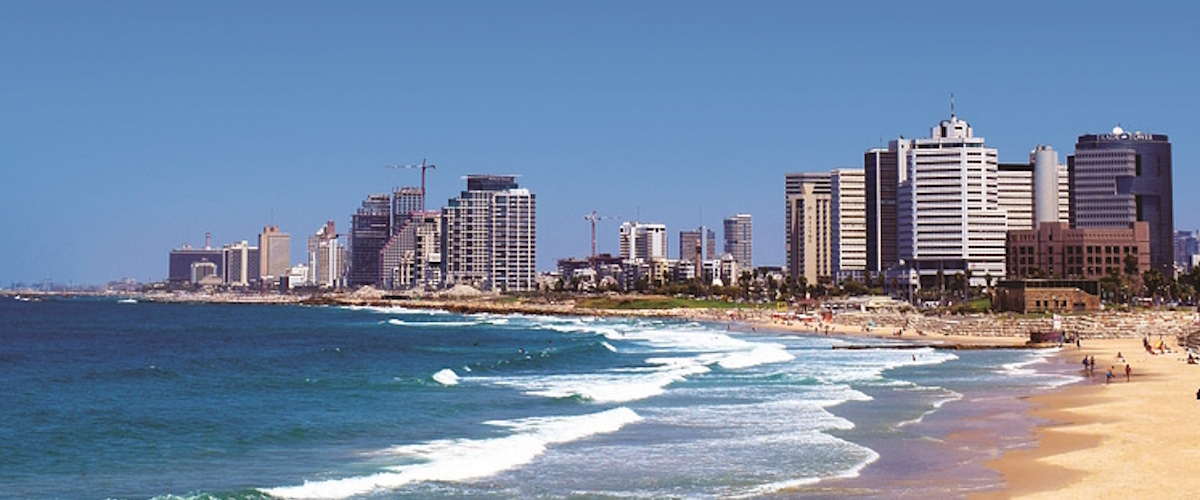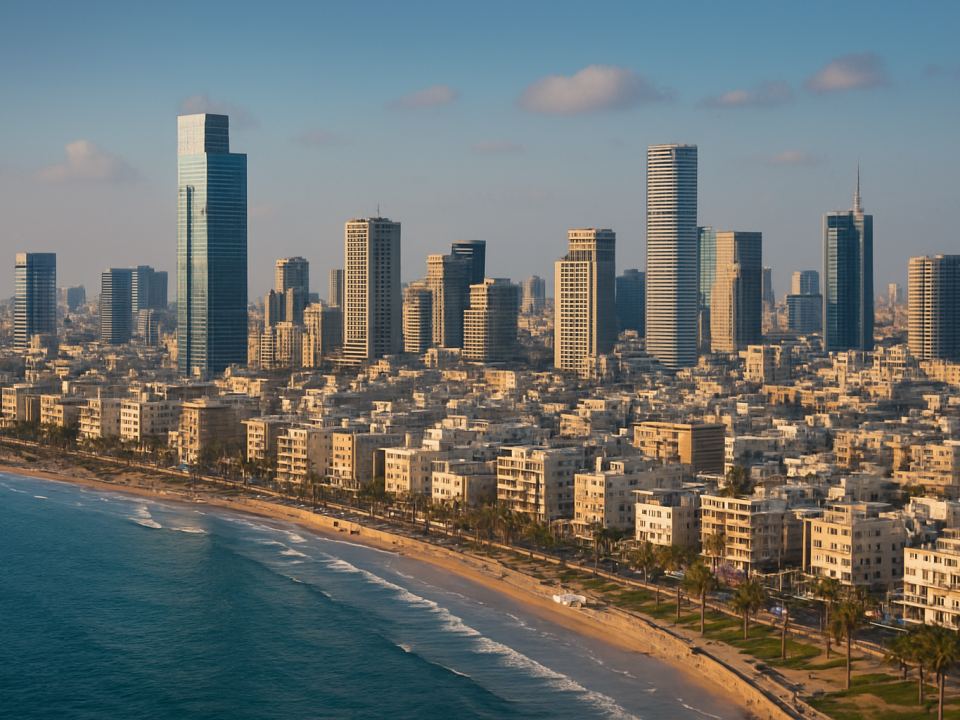
Jews are coming: Over 29,000 new immigrants arrived in Israel during the war
August 29, 2024
Israel’s population ticks toward 10 million milestone as it marks 76 years
October 21, 2024From north to south, some of the major new construction projects along Israel’s beachfront.
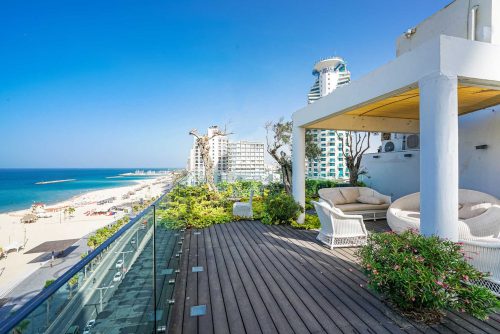
Did you get to the beach this summer? The beachfront landscape you have come to know will change completely in the coming years. There will be many more seafront apartments, but they won’t be cheap.
Israel’s Mediterranean coast stretches over 196 kilometers, from Zikim in the south, near the Gaza Strip, to Rosh Hanikra in the north, on the Lebanese border. Of this almost 200-kilometer stretch, only 17 kilometers are designated beaches, and about 50 kilometers are blocked to public access, due to security facilities, large infrastructure facilities, etc. In 2004, the Protection of the Coastal Environment Law, came into force, which restricted construction to 100 meters inland from the coastline (“setback distance”).
This area, according to the law, will be open to pedestrian traffic along its entire length and includes many restrictions on building, with the aim of protecting the coastal environment, its natural treasures and heritage, restoring and preserving them as a resource with unique values; preserving the coastal environment and the coastal beaches for the benefit and enjoyment of the public, and for future generations. Based on the provisions of this law, the Protection of the Coastal Environment Committee, among others, was established.
Today, many new construction projects are being planned along and around this Mediterranean coast.
The following represents some of the top plans, in geographic order from north to south.
Akko: Renewing the South Beach
The project is situated in one of the city’s southern points. The Planning Administration states that this area has been neglected for many years. The plan aims to “create an activity center on the urban seafront, operational throughout the year, and for the benefit of all users: project residents and beach-goers.”
Project area: 40.5 dunams (10 acres)
Minimum setback distance: 100 meters
Project scope: 304 housing units and 280 hotel rooms, at a height of up to 16 stories. Akko has already experienced an increase in the number of floors and prices in recent years. For example, a 4-room, 87 square meter apartment in an old building on Ha’Ilan Street, recently sold for about NIS 1 million. New apartments sell for more than NIS 1.5 million.
Planning stage: Submitted for approval by the Protection of the Coastal Environment Committee at the January 2022 meeting. In December 2023, the first round of objections was heard.
Available housing units: None
Public spaces: a strip of beachfront covering several tens of dunams; an open area without residential buildings before the first setback line. Public buildings in this area will be open and unfenced. Commercial storefronts may be included.
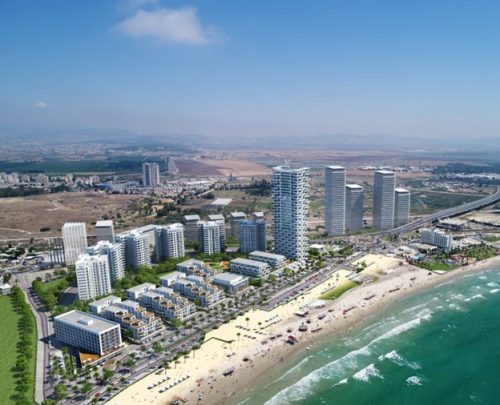
Haifa: Coastal neighborhoods waking up
Haifa is about to undergo a significant facelift, with extensive efforts to be focused on the previously neglected coastal neighborhoods. New developments will be constructed along with tens of thousands of urban renewal housing units.
The following are two of the main projects in Haifa. As for prices, according to real estate website Madlan, the average price today in Bat Galim, for both old and new apartments, is NIS 2.23 million. The new developments will be much more expensive.
The Hazit Hayam Ha’Ironit complex
A joint project of the Israel Land Authority and the Haifa Municipality to add residential buildings on the seafront, from the University of Haifa Port Campus to the outskirts of the Bat Galim neighborhood.
Project area: 1,746 dunams (431 acres)
Minimum setback distance: 100 meters
Project scope: 1,800 small and medium housing units
Planning stage: Outline plan approved in 2018. Detailed plans are still in the initial planning stages.
Available housing units: Information not yet available.
Public spaces: About 43 dunams (10.6 acres) of open area out of the total project area will be developed. A passenger terminal will be built at the port itself, a restaurant, a tourist center, and a building designated for historic preservation: the British Mandate-era port administration building.
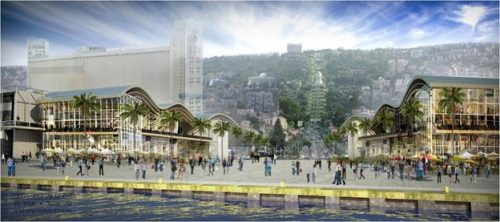
The Israeli Navy Yard complex
The plan will establish a new neighborhood on the site of the vacated naval base in the Bat Galim area, and extend to near Rambam Hospital. The project comprises high-rise towers of up to 25 and 30 floors. Companies to build the complex include ZMH Hammerman and Africa Israel Urban Renewal. Ronit Eshed Levy, CEO of Africa Israel Urban Renewal says, “The project is located at the northern edge of Haifa, in significant proximity to the hospital, and the Bat Galim railway station. The complex enjoys a 180-degree view of the sea, so most apartments have sea views, and the beach itself is only a few minutes’ walk away.”
As for special considerations in project construction, Eshed Levy notes, “It poses significant engineering and performance challenges, due to the presence of groundwater under the property, and due to the aggressive marine environment. The proximity to the seashore brings in constant sea spray and salinity, requiring the use of corrosion-proof elements throughout the project. This is reflected in our choice of methods and materials, selection of finishing, and in fact, in every detail. These are complex, dramatic issues to deal with. We do a great deal of consideration with consultants who specialized in marine environments, so that the apartments will withstand the test of time.
Project area: 182 dunams (45 acres)
Minimum setback distance: 200+ meters
Project scope: 1,300 housing units
Planning stage: Approved in July of this year.
Available housing units: 260 units for assistive living and student dormitories.
Public spaces: A beach park, boardwalk and road will be built on the beachfront. The first row of the project will be set back after these. The plan includes a connection between Bat Galim Beach and the Quiet Beach (HaHof Hashaket), with the boardwalk developed to create a continuum with beach on both sides.
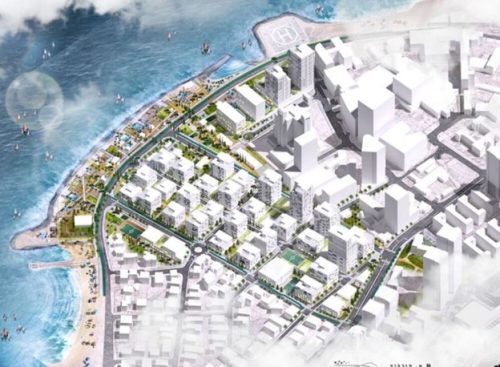
Tel Aviv: The coastline continues to develop
Anyone looking at Tel Aviv from the sea sees an already impressive line of buildings along the beach, but this area continues to be developed. A new property has opened to the north of the city, and new developments may also be seen in the existing urban areas.
The New North
Tel Aviv is expanding and developing northwards, up to the southern border of Herzliya, with two new and large projects that will add almost 30,000 new housing units: the Sde Dov neighborhood and the Northwest neighborhood.
Project area: ~3,200 dunams (790.7 acres)
Minimum setback distance: 150-250 meters
Project scope: About 29,000 housing units, up to 30 stories high, on the first setback line of the beachfront.
Planning stage: The detailed plans for the Sde Dov neighborhood have been approved. One of these – the Eshkol plan – is already in the first stages of implementation. The Northwest neighborhood plan was already approved in 2015, but the approval of the detailed plans has been delayed. Of the apartments already been sold, prices are NIS 80,000 per square meter. According to the Tax Authority, three two-room apartments in Sde Dov, each with an area of 46-48 square meters, were recently sold for NIS 3.5 million, or NIS 76,000 per square meter.
Available housing units: 2,760 units
Public spaces: A coastal park will stretch along the entire western strip of both projects, and the existing beaches will be preserved and developed accordingly.
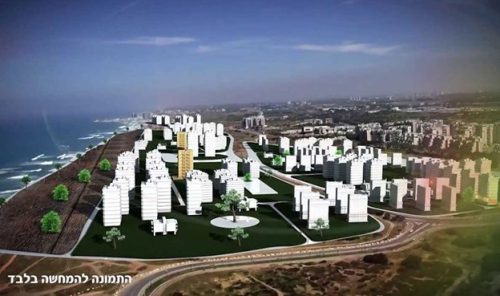
Atarim Square
A controversial plan that is expected to completely change the face of the famous Atarim Square by, among other things, adding two towers and eliminating the underpass below the square.
Project area: 28 dunams (7 acres)
Minimum setback distance: 150-200 meters
Project scope: About 220 housing units and about 300 hotel rooms. This area is one of the most expensive in the city and prices are expected to rise accordingly. A large three-room, 100 square meter apartment on HaYarkon Street, with parking, recently sold for NIS 7 million.
Planning stage: The plan was approved for deposit in early 2022, but is still in the planning objection hearings phase.
Available housing units: None
Public spaces: Access to the sea is expected to remain as is, with the addition of a new urban square. One of the biggest controversies surrounding the plan is the transformation of 4,800 square meters of open public space into open private space. Opponents claim that an area defined as “open private” quickly becomes inaccessible to the public, but the project outline emphasizes that it “will be designed in a way that allows convenient and accessible passage for pedestrians, bicyclists, and the disabled,” and that “No border of the privately owned public space by a built or living fence will be permitted.” The issue will be finally clarified at the end of the planning objection hearings phase.
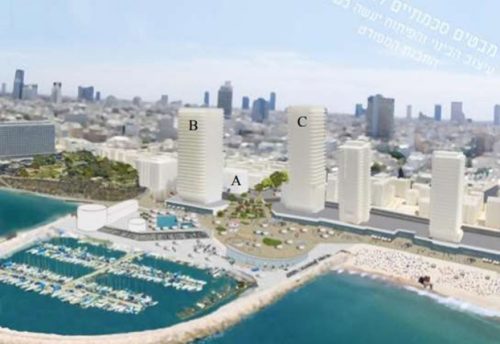
Rishon Lezion: “Range 24” to add 2 kilometers of beachfront
Much has already been written about the “Range 24” project to be built on a compound held by the IDF, right on the Rishon Lezion beach.
Project area: 1,945 dunams (480.6 acres)
Minimum setback distance: 300 meters
Project scope: 10,000 units. Construction is still a long way off, but to get an idea of price, an apartment on HaShayetet Street close to the Rishon Lezion beach, sold this year for NIS 4.1 million. This was a four-room, 137 square meter apartment, on the 16th floor of a 21-floor building, with two parking spaces.
Planning stage: In the early stages of discussions with the Local Planning and Building Committee, which stated that an environmental impact report is currently being compiled, after which the planning process will continue.
Available housing units: Information not yet available.
Public spaces: Expansion of the city’s seafront by two additional kilometers, and designation of 2,000 dunams (494 acres) as a nature reserve. The Protection of the Coastal Environment Committee has determined a 300-meter setback distance, in which there will be no development.
The content of this article is designed to provide the reader with general information and not to serve as legal or other professional advice for a particular transaction

